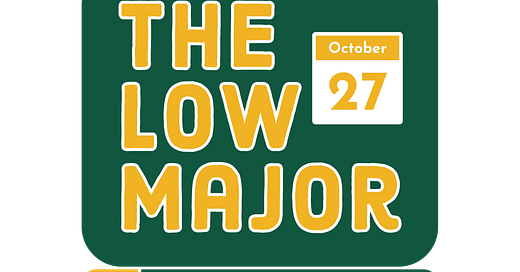Chosen in: 1978
Chosen by: University administration
The College of William & Mary didn’t begin playing modern intercollegiate sports until 200 years after it was founded, so…1893. Despite the college seal being green and gold, the uniforms for their first football teams were orange and white, so the teams were called the Orange and White. Then, in 1909, the team managers got tired of cleaning a bunch of muddy white jerseys all the time, so they switched to orange and black and called themselves the Orange and Black.
Beginning in 1916, print sources referred to William & Mary’s teams as the Indians. It’s unclear who exactly coined this nickname or why, but the school notes that the most likely originator was Flat Hat student newspaper writer William Durham Harris and that “it’s more than safe to assume that the name had something to do with W&M’s history with Native Americans through the College’s [Brafferton] ‘Indian School’”. That second point seems just a tad revisionist to me, but y’know. It’s at least an explanation.
The “Tribe” nickname wouldn’t become official for several decades but it actually dates back all the way to 1924, when it appeared in the Colonial Echo yearbook. Writers often used various unofficial Native American-based nicknames to refer to their “Indians”, including “Braves”, “Warriors”, and, yes, “Tribe”. This is also when the sports teams finally began wearing the green and gold color scheme used by the rest of the institution.
While their teams were nicknamed the Indians, William & Mary’s mascot history consisted of almost anything but: they had dogs, an alligator, and even human children serve as their mascot around this time. By the late 1930s, they finally settled on a pony being ridden by someone in Native American garb.
As far as Native American misrepresentation by schools claiming the “Indians” nickname goes, William & Mary was less egregious than most. The pony mascot was pretty tame, and though they used a caricaturish Native American logo beginning in the ‘60s, it was scrapped only a decade later as William & Mary drifted away from the “Indians” branding entirely.
Beginning in 1974, the college gradually moved to using a logo that featured only the letters “WM” and two feathers, a process that was completed in 1978. Around the same time, William & Mary began to prefer the term “Tribe” over “Indians”, with the latter being completely eliminated by the early 1980s.
This movement was enough to spare William & Mary from the NCAA’s 2005 ruling against unsanctioned Native American nicknames, imagery, and mascots…mostly. They did rule that W&M had to nix the feathers in their logo, and that’s how we got the “W&M” logo the school still uses today. But the “Tribe” nickname could stay, which it has to the present day.
Because William & Mary is forbidden from representing their teams with a Native American mascot, they had to put actual effort into selecting a new mascot, but that effort did not go unrewarded. In 2010, they introduced a costumed griffin—a mythological cross between a lion and an eagle—so chosen because the coat of arms of King William and Queen Mary featured several lions and because the eagle is a prominent symbol of the United States. In 2018, they named the griffin Reveley after outgoing college president Taylor Reveley.
Personally, as someone who’s researched this history for over 350 different schools, William & Mary’s mascot is probably in the top five in creativity, to say nothing about how cool griffins are in general. If it was up to me, their teams would also be nicknamed the Griffins, but that doesn’t seem imminent. Ah well. A guy can dream.
Previous page: Wichita State Shockers
Next page: Winthrop Eagles
Find every page at the Name-a-Day Calendar hub!






Name a team after Griffins, NCAA cowards.